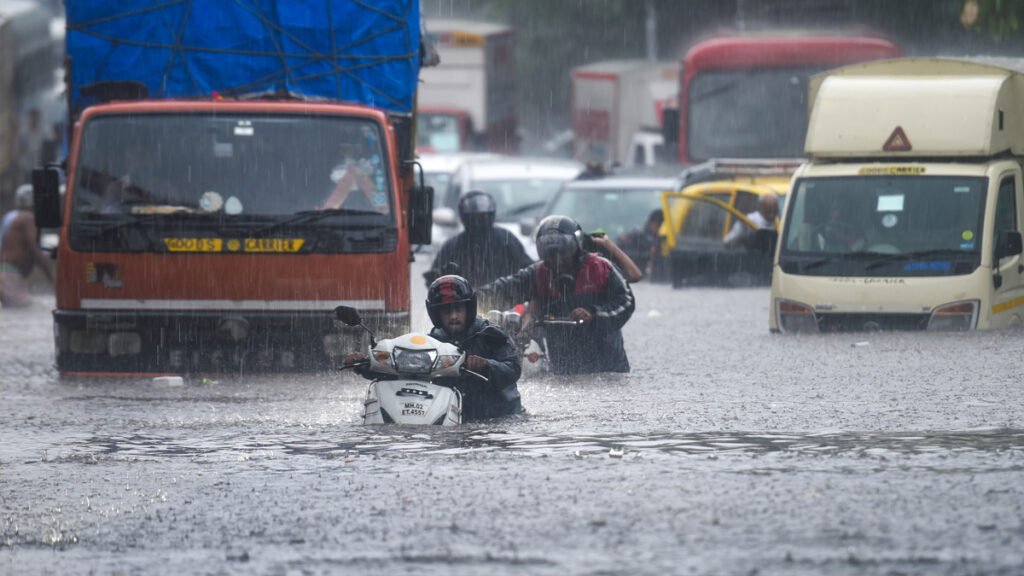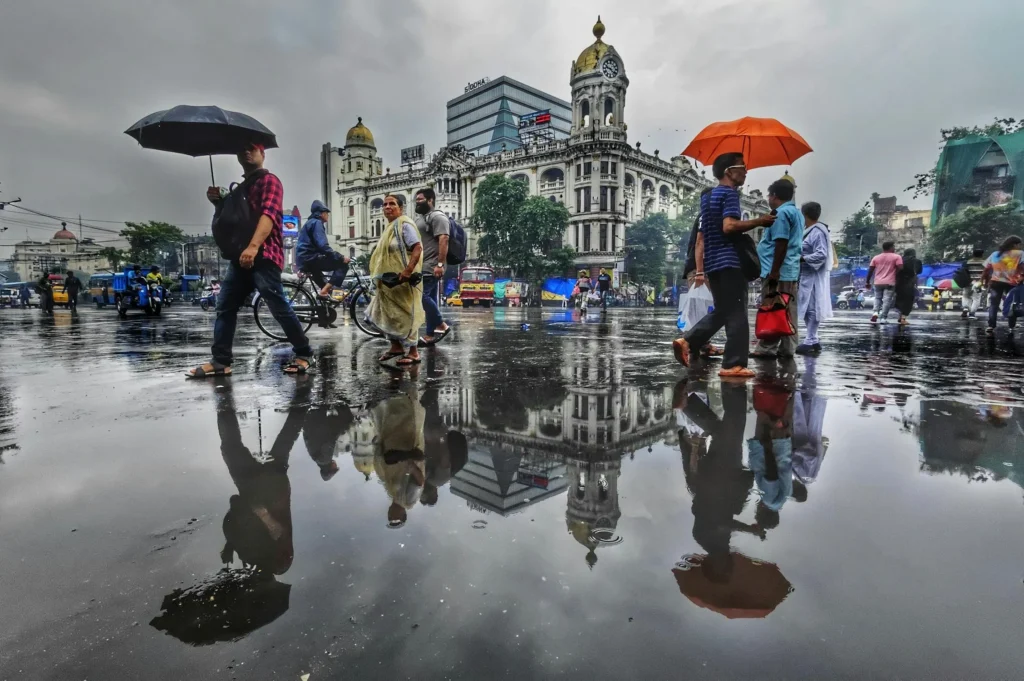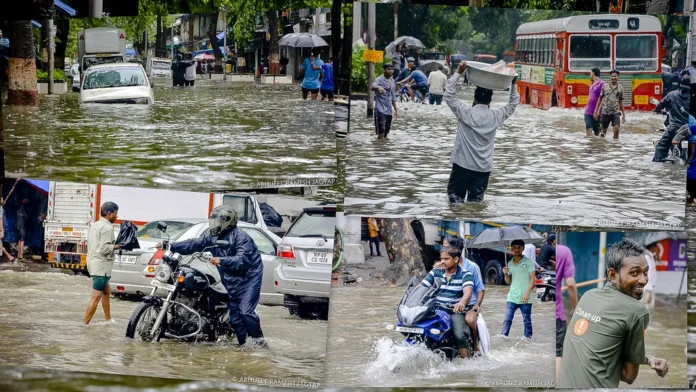Mumbai Rains—A Comprehensive Guide to Monsoon Magic of the City
They say Mumbai, the city that never sleeps, becomes a different city when the monsoons arrive. Scorching summers give way to refreshing showers that bathe the concrete jungle green, filling the air with earthy petrichor. But the magic of Mumbai rains lies much beyond its visual and olfactory appeal. A monsoon performs a whole function of ecosystem, culture, and very existence in this city. This will be an all-inclusive guide that opens the curtain to the Mumbai rains and analyzes the meteorological reasons behind the monsoon, its impact on infrastructure, the environment, and ways of life unique to it.
Deconstructing the Monsoon Phenomenon
The monsoon of Mumbai rain is not some phenomenon that just arrives out of the blue; instead, it is a combination of meteorological factors at play:
Southwest Winds and the Himalayas
From June to September, there are strong, warm winds from the southwest Indian Ocean that move towards the Indian sub-continent. These are forced upwards by the gigantic Himalayas. With this rise in height, cooling and condensation set in with the resultant rain clouds.
Low-Pressure Systems and Intensified Rainfall
Over the land mass, the development of low pressure further accentuates the induction of moisture-laden winds and hence rainfall. It is this interplay among the wind patterns, rising air, and low pressure that creates conditions for the dramatic downpours of the monsoon Mumbai rain.

The Arrival of the Monsoon Mumbai Rain
Pre-Monsoon Showers: The “Mango Showers”
May provides a pleasant dress rehearsal for the monsoon with the “mango showers.” The light to medium premonsoon showers often come around the time of the mango harvest, hence the term. Not as heavy as the monsoon downpours, the mango showers still bring a refreshing break from summer heat and herald the approaching transformation of the city.
The Official Monsoon Declaration by the IMD
The arrival of the monsoon in Mumbai rains is officially announced by the Indian Meteorological Department, based on certain specified criteria usually involving rainfall amount and wind patterns and a definite sustained change in the weather. With this announcement of the IMD, the official monsoon season in the city begins, heralding many important changes.
Phases of the Mumbai Rains
The monsoon mumbai rains season can broadly be divided into three phases with distinct characteristics.
Onset (June–July)
Starting from June and July, the first overflow of the monsoon brings heavy downpours, showered with strong winds and thunderstorms. Dramatic and chaotic might be a description of this phase. Intense rainfall refills the depleted water reserves since summer and gives relief from blistering heat. Intensity in downfalls may further lead to flash flooding and strain on the infrastructure.
Peak Monsoon (July-August)
The next burst, July and August, is a time of steady, moderate rainfall, punctuated by heavy showers. This is the core of the monsoon period: there is a regular supply of water for agriculture and lakes and reservoirs remain brimful with water. Though rains bring relief from the summer heat, the continues humidity makes it rather stuffy.
Withdrawal (September-October)
By September, the monsoon begins to retreat gradually. The rain grows more fitful; the days get increasingly more humid. It is the transition to winter. While this decrease in rain might be a much-welcome change, it is also an indication that the cycle is ending—the city has to prepare for the dry season once again.
Still Raining in Mumbai

Revival of Environment and Air Quality
The monsoon turns this dusty, concrete Mumbai jungle into a green paradise: parks, gardens, and even street corners come alive with lush greenery. Rain washes off pollutants accumulated during the dry season, thus providing some respite from air pollution—one of the major concerns in megacities like Mumbai. This cleaning effect enables residents to breathe slightly easier and further enjoy the fresher air.
Water Security through Replenishing Lakes, Reservoirs, and Aquifers
The monsoon acts on its own as a savior to Mumbai by replenishing these crucial sources of water. Downpours from the monsoon raise levels in lakes and reservoirs, supplying enough water to the city for the entire year. This is important for a metropolis that has an ever-growing population with rising water demands. Besides, the monsoon replenishes underground aquifers, further supplementing the city’s water resources.
Agricultural Boon for Surrounding Areas
Rains are a lifeline for many farmers residing in areas around Mumbai. The steady rains in the peak months of the monsoon season enable farmers to cultivate crops such as paddy rice, vegetables, and fruits. This not only provides food security in the city but also ensures the economic well-being of the region. The good harvest season after the monsoons brings prosperity both to the farmer and the consumer.
Cultural Significance: Festivals and Celebrations
The monsoon assumes a cultural significance in Indian culture, which goes on to include Mumbai. The coming of the rains is celebrated by festivals that reflect its importance as water and the renewal associated with it.
Ganesh Chaturthi
This is a ten-day festival celebrated during the monsoon peak in August/September and is dedicated to Lord Ganesha, an elephant-headed deity associated with wisdom and new beginnings. The city’s life consists of bringing lavish idols of Ganesha either to homes or putting them up at pandals, and at the end of the festival, immersion is done in water bodies, indicating Ganesha’s return to Kailash.
Teejri
This colorful festival is mainly celebrated by women and is coincided with the monsoon season. In the session, women come together to wear colorful clothes, sing traditional songs, and enjoy monsoon delicacies. Teejri means rain for agriculture/fertility. These festivals give a unique charm to Mumbai rains in the monsoon period. It shows how the city and its natural setting bond well, revealing the cultural importance of rain in Indian culture.
Challenges of the Monsoon

Flooding in Urban Areas and Inefficient Drainage Systems
Though the monsoon brings the much-needed water, the archaic drainage system in Mumbai has occasionally been unable to handle the heavy downpour. This can result in waterlogging, particularly in the low-lying areas of the city. The streets get flooded, and the passage of traffic is greatly hampered. Further, stagnant water can damage infrastructure, and it also causes health problems because it results in the breeding of mosquitoes, which spread diseases. It brings the additional hassle of wading through flooded roads during daily commutes for Mumbaikars.
Landslides and Risks to Infrastructure
Heavy monsoon mumbai rains can trigger landslides in hilly areas in and around Mumbai. This causes serious threats to life and property, damages homes and buildings on slopes, and blocks roads. The risk is more in areas with unregulated construction practices on the hillsides. The incessant downpour could also dent roads and bridges, which create infrastructure woes that require urgent repairs for public safety.
Potholes, Uneven Roads, and Traffic Disruptions
Mumbai roads are badly battered by incessant rain. The existing potholes become big, and their numbers increase; new ones spring up because of the pounding of the rain. These bumpy surfaces, coupled with reduced visibility due to heavy downpours, may pose a threat while driving, leading to accidents and traffic congestion. Commuting in the monsoon is frustrating and requires extra care and patience from Mumbaikars.
Power Outage, Delayed Transport, and Waterborne Diseases
The overstretched electricity grids can hardly sustain the rise in demand, which results in frequent power outages. This leads to partial disruption to life and especially critical services such as hospitals and traffic lights. Weather conditions also delay or cancel public transport services due to flooding and breakdowns of infrastructure. Moreover, rainwater, left behind by the receding monsoon, has created breeding spots for mosquitoes, thus increasing the chances of waterborne diseases such as dengue and malaria. These are public health concerns that call for preventive measures and proper sanitation practices.
Living with the Monsoon: The Mumbaikar Way
Adapting to the Wet Weather: Mumbaikar Ingenuity
The resilient Mumbaikars of Mumbai have evolved a different way of life that keeps pace with the monsoon’s whims. Indeed, ingenuity and resourcefulness are required tools in this season. Now, ditch that plain black umbrella! Mumbaikars just love an array of colorful and whacky umbrellas. Some even come fitted with in-built raincoats to wade through the downpour.
Impermanent Raincoats
When umbrellas cannot help one out, the Mumbaikars innovate. Plastic sheets or old newspapers become makeshift raincoats that would keep one dry for a while from the heavy showers.
Waterproof Footwear
Robust waterproof boots or sandals become handy items during this season. One needs footwear ready to stroll through flooded streets.
Public Transport Hacks
Mumbaikars become experts at getting through crowded public transport during the monsoon. Quite often, people use newspapers or plastic bags as impromptu seat covers to stay dry. These are some of the ways in which Mumbaikars cope with the monsoon. Their resourcefulness and positive attitude mean that the city continues to function even amidst the downpours.
Culinary Delights of the Season: Street Food and Comfort Dishes
The monsoon season brings along a gamut of street food that warms the soul and satiates your cravings. Deep-fried Pakoras/Fritters come in multiple vegetarian and non-vegetarian variants, perfectly crispy hot for a drizzly rainy day. From onion pakoras to potato and chicken pakoras, the variety is mouth-watering. There is also the spicy, tangy Chaat available at street food stalls, which consists of spicy potatoes, chickpeas, crispy fried dough, and various tangy sauces.
Monsoons also call for a cup of hot Chai/Tea. Hot Chai is a comforting beverage during the rain, flavored with spices like ginger and cardamom. Street-side tea stalls known as Chaiwalas do brisk business.
Then there is Bhutta/Grilled Corn which is roasted on coal and then spiced up with lime and chilli. It becomes a delightful snack during the monsoon. The comfort foods of Mumbai keep one warm, satisfied, and connected to the cultural diversity.
Monsoon Activities: Festivals, Nature Walks, and Weekend Getaways
Monsoon in Mumbai rains brings out a completely new vibe. Festivals such as Ganesh Chaturthi in Mumbai are a joyous time. Pandals are erected, devotees visit them, and there is a sense of festive spirit that pervades the city. The surroundings become green and refreshed, which makes it an ideal time for nature walks. Sanjay Gandhi National Park becomes especially beautiful and offers tranquil trails for nature enthusiasts.
Matheran and Lonavala
The hill stations such as Matheran and Lonavala offer picturesque views with cascading waterfalls and rolling green hills. These make ideal weekend getaways during the monsoon, providing a refreshing escape from the bustling city life.
The Coastal Town of Alibaug: A visit to Alibaug is incomplete without experiencing the coastal charm in the monsoon. The sight of the waves crashing on the rocky shores, the wet sand, and the fresh sea breeze is calming. These activities provide a blend of cultural, natural, and recreational elements that make the monsoon a unique experience.
Mumbai’s Collective Efforts in Monsoon Preparedness
Urban Planning and Drainage System Improvement
The city has launched initiatives to tackle the monsoon’s impact on infrastructure. The Brihanmumbai Municipal Corporation (BMC) works towards improving drainage systems by desilting the Mithi River and stormwater drains, installing water pumps in low-lying areas, and enhancing road surfaces to withstand heavy rainfall.
Disaster Management and Response Mechanisms
Mumbai has established disaster management systems to cope with emergencies. The city’s Disaster Management Unit monitors weather updates, coordinates rescue operations, and issues timely alerts. It collaborates with agencies such as the National Disaster Response Force (NDRF) to ensure preparedness for potential crises.
Community Involvement in Clean-Up and Safety Measures
Residents also contribute to the city’s monsoon preparedness. Community clean-up drives, where citizens clear debris and unclog drains, play a vital role in preventing waterlogging. Awareness campaigns educate people about monsoon safety measures, such as avoiding waterlogged areas and ensuring proper sanitation.
Conclusion: Embracing the Mumbai Monsoon with Open Arms
The Mumbai monsoon is a multifaceted phenomenon that touches every aspect of life in the city. While it presents challenges such as flooding, infrastructure strain, and health risks, it also brings environmental rejuvenation, cultural vibrancy, and a sense of communal resilience. The city’s ability to adapt and thrive amidst the rains is a testament to the spirit of its residents. From the refreshing showers to the challenges they bring, the Mumbai monsoon is an integral part of the city’s identity, inviting everyone to embrace its magic with open arms.


